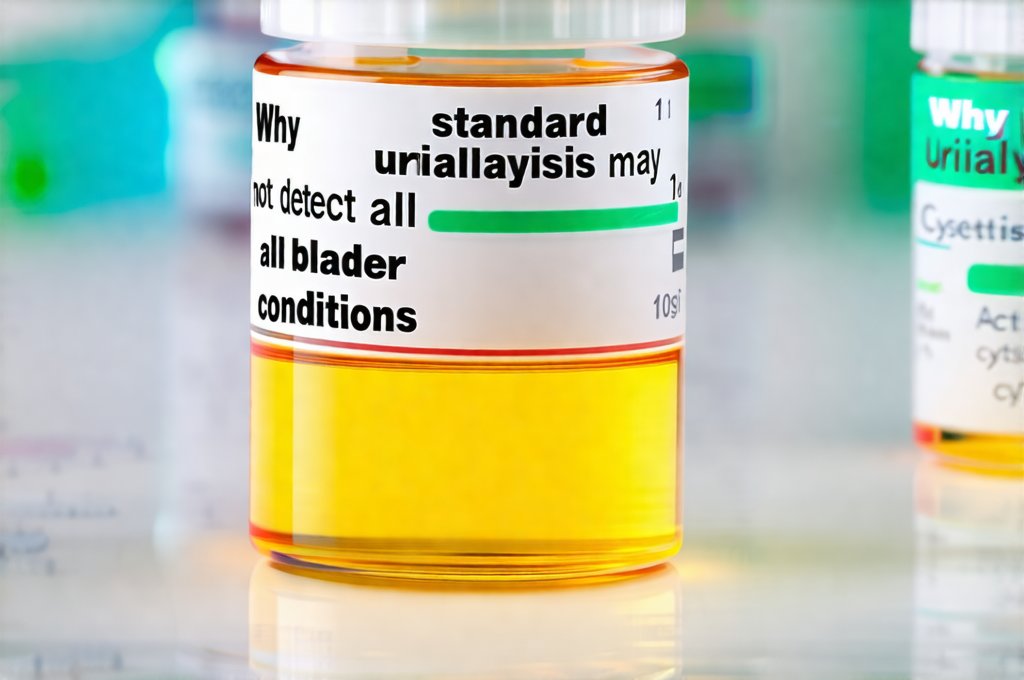Standard urinalysis is often considered a cornerstone of initial diagnostic workups for various conditions, particularly those affecting the urinary tract. It’s readily available, relatively inexpensive, and non-invasive, making it an attractive first step in evaluating symptoms like frequent urination, pain during urination, or blood in the urine. However, despite its widespread use, relying solely on standard urinalysis to detect all bladder conditions can be misleading. The limitations stem from the test’s inherent nature – it assesses what’s present in the urine at a single point in time and often lacks sensitivity for detecting early-stage or intermittent issues. This means many significant bladder problems might go undetected, leading to delayed diagnoses and potentially suboptimal treatment plans.
The fundamental issue lies in the fact that standard urinalysis primarily looks for macroscopic (visible) and microscopic abnormalities – things like blood, protein, glucose, white blood cells, bacteria, and crystals. While these findings can indicate a problem, their absence doesn’t necessarily equate to health. Many bladder conditions, especially those in their early stages or those characterized by intermittent symptoms, don’t produce enough of these detectable markers to be picked up by standard testing methods. Furthermore, the collection method itself can influence results; ‘clean catch’ samples are recommended to reduce contamination but aren’t always consistently performed correctly, impacting accuracy. Consequently, a normal urinalysis does not rule out bladder dysfunction or disease. If you are concerned about whether you can tell if your bladder is full or not, consult with a specialist full.
Limitations of Standard Urinalysis in Detecting Bladder Conditions
Standard urinalysis is designed to detect certain key indicators of urinary tract health, primarily focusing on the presence of abnormal substances or cells. However, this approach has several inherent limitations when it comes to comprehensively evaluating bladder conditions. One significant limitation is its lack of sensitivity for detecting early-stage disease. Many bladder cancers, for example, may not shed detectable cells into the urine until they’ve reached a more advanced stage. Similarly, interstitial cystitis/bladder pain syndrome (IC/BPS), often characterized by chronic pelvic pain and urinary urgency, frequently presents with normal urinalysis results in its initial stages, making diagnosis challenging.
Another issue is that standard urinalysis doesn’t provide information about bladder function. It can tell you if blood or protein is present, but it can’t assess the bladder’s capacity, how well it empties, or whether there are issues with urinary flow. Conditions like overactive bladder (OAB) and stress incontinence often don’t produce abnormal findings on a standard urinalysis, requiring different diagnostic tests to evaluate bladder function accurately. The test also doesn’t differentiate between causes of hematuria (blood in the urine). While it can confirm its presence, it cannot determine if the blood originates from the kidneys, ureters, bladder, or urethra without further investigation.
Finally, standard urinalysis is susceptible to false negatives and false positives. Contamination during sample collection can lead to inaccurate results, while dehydration or certain medications can also affect findings. A false negative could give a patient (and physician) a false sense of security, delaying necessary diagnostic steps. Conversely, a false positive might trigger unnecessary anxiety and further testing. It is important to remember that standard urinalysis should be considered as one piece of the puzzle in evaluating urinary symptoms, rather than a definitive diagnostic tool. In some cases, bladder spasms can feel like cramps cramps.
Alternative & Complementary Diagnostic Methods
Given the limitations of standard urinalysis, healthcare professionals rely on several alternative and complementary methods to accurately diagnose bladder conditions. Cystoscopy, involving inserting a thin, flexible tube with a camera into the bladder, allows for direct visualization of the bladder lining, aiding in the detection of tumors, inflammation, or other abnormalities. Urodynamic testing assesses bladder function by measuring pressures and flow rates during filling and emptying, providing valuable insights into conditions like OAB and incontinence.
Imaging techniques such as ultrasound, CT scans, and MRI offer non-invasive ways to visualize the bladder and surrounding structures. Ultrasound is often used as a first-line imaging modality for evaluating bladder size and shape, while CT and MRI provide more detailed images that can help identify tumors or other structural abnormalities. Beyond these established methods, newer technologies are emerging. Cytology, examining urine samples for cancer cells using advanced techniques like flow cytometry, offers improved sensitivity compared to standard microscopic examination. Biomarker testing, analyzing specific proteins or genetic markers in the urine, holds promise for early detection of bladder cancer and other conditions but is still under development and not yet widely available.
The Role of Cystoscopy
Cystoscopy provides a direct view of the bladder’s interior, allowing clinicians to identify abnormalities that wouldn’t be detectable through urinalysis alone. It’s especially valuable in diagnosing bladder cancers, as it can pinpoint tumor location and size for targeted biopsies. – During a cystoscopic examination, a thin, flexible tube with a light source and camera is gently inserted into the urethra and advanced into the bladder. – The physician can then visually inspect the bladder lining for any suspicious areas or abnormalities. – Biopsies can be taken directly from any concerning tissue samples during the procedure for further pathological analysis. While cystoscopy is more invasive than urinalysis, it’s often crucial for confirming diagnoses and guiding treatment decisions.
Understanding Urodynamic Testing
Urodynamic testing comprehensively assesses bladder function by measuring various parameters related to storage and emptying. – These tests help determine if the bladder can hold enough urine, if it empties effectively, and if there are any issues with urinary flow or pressure. – Common urodynamic tests include cystometry (measuring bladder pressure during filling), uroflowmetry (assessing urinary flow rate), and postvoid residual measurement (determining the amount of urine remaining in the bladder after urination). – Urodynamic studies are particularly useful in diagnosing conditions like overactive bladder, stress incontinence, and urge incontinence. Proper posture might improve bladder function function.
Biomarker Research & Future Directions
Research into biomarker testing represents a promising avenue for improving early detection and diagnosis of bladder conditions. – Biomarkers are measurable substances that can indicate the presence or progression of disease. In the context of bladder cancer, researchers are investigating several potential biomarkers in urine samples, including proteins, genetic markers, and microRNAs. – The goal is to develop non-invasive tests that can detect early-stage cancers with higher accuracy than current methods. – While biomarker testing is still evolving, it holds great promise for personalized medicine approaches, allowing for earlier interventions and potentially improving patient outcomes. It’s important to note that these are not replacements for standard diagnostics but rather complementary tools that may offer more specific and sensitive information. Can a urinalysis detect bladder stones stones is an important question to consider during diagnosis?
In conclusion, while standard urinalysis remains a valuable initial screening tool, its limitations in detecting all bladder conditions necessitate a comprehensive diagnostic approach. Relying solely on this test can lead to missed diagnoses and delayed treatment. Utilizing alternative methods like cystoscopy, urodynamic testing, and advanced imaging techniques, coupled with ongoing research into biomarker analysis, is crucial for ensuring accurate diagnosis and optimal management of bladder health. A thorough evaluation by a healthcare professional remains the cornerstone of effective care, taking into account an individual’s symptoms, medical history, and appropriate diagnostic investigations.





















